When I visited San Diego, I was so impressed by the trolley’s system. In Japan, most of the train and subway have a gap between a cart and a platform. Therefore, at first Moon Riders (wheelchair users) would need to ask a station staff to bring a mobile ramp to help Moon Rider passengers board the train. The station staff would then contact another station, where the passenger gets off and make sure that another mobile ramp can be ready by then for the passenger to get off the train. After this process, the passenger finally can get on a cart. It might take more than 10 minutes to take train if a station is big and busy. The trolley in San Diego, however, is very easy. It is the best system for Moon Riders!
Attended at International Technology and Persons with Disabilities Conference

In late March, I attended 31st Annual International Technology and Persons with Disabilities Conference in San Diego. At the conference, you can find the latest technology service and products which support and maximize abilities of people with disabilities in daily life, at school, or workplace.
At first, I was only planning to go there as an attendee. However, Sheryl Burgstahler who is a director of DO-IT Program in University of Washington (Interview report is here) asked me to give a presentation with her. DO-IT Program has been implementing locally in Asian countries including Japan. At Sheryl’s session, I got 15 minutes to talk about education and employment environment for people with disabilities in Japan.
Self-advocacy Is One of the Most Essential Skills but Least Trained ~University of Washington, DO-IT Part 3~
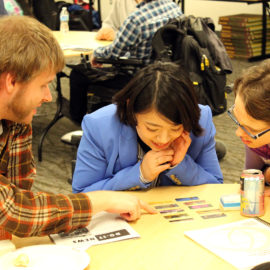
In the next day of DO-IT interview, I was invited to a pizza networking gathering which is held 3 times a year to get all Scholars and parents together. The rooms for students and parents are separated. In that way, students can talk with students about their updates, and parents can exchange information.
It is very good idea to make an opportunity for parents to stay connected. Parents have so many worries because they don’t have enough information or experiences, and eventually they overprotect their kids. By providing a place where parents get together, they can share their worries and difficulties, and other parents can give advice and think ways to resolve the issues together. This is a huge power.
Self-advocacy Is One of the Most Essential Skills but Least Trained ~University of Washington, DO-IT Part 2~
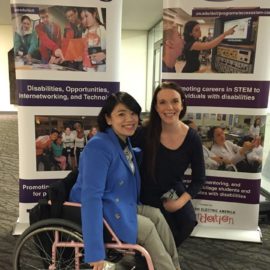
Though DO-IT hosts many programs, the most remarkable is the ”Scholars Program”. Once the selected, students can learn about college life throughout the school year and the upcoming summer. By experiencing real college life, students with disabilities notice things they need assistance with and think of what kind of support they need. They also practice how to communicate with faculty to ask for accommodations.
In English, “self-advocacy” means that people with disabilities speak up for themselves to ask for what they need to resolve issues around them. Kids learn that naturally through their daily life at home and school. However, for kids with disabilities, sometimes adults intervene too much at home and school. Then kids with disabilities miss opportunities to learn to self-advocate themselves.
Self-advocacy Is One of the Most Essential Skills but Least Trained ~University of Washington, DO-IT Part 1~
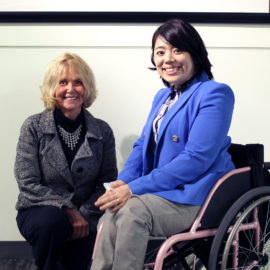
In February, I visited DO-IT in University of Washington. Dr. Sheryl Burgstahler, a founder and director of DO-IT, got interested in “assistive technology” which supports people with disabilities throughout her first career as a junior high mathematics teacher. In 1984, when Macintosh came to the world, Sheryl felt that IT would change the society dramatically. Then she started thinking how to reduce the gap between people with and without disabilities by utilizing her knowledge, experience as a teacher, and IT.
To students with disabilities, there is a big difference in learning environment between college and high school which is mandatory education in the US. Sheryl had found this issue, and decided to start DO-IT which supports students with disabilities to transit smoothly from high school to post-secondary education.
Do You Disclose Your Disability on Your Résumé? ~Boston Center for Independent Living Part 2~
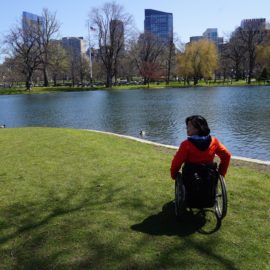
To me, it is very normal to disclose my disability on my résumé because it is very common in Japan. However, I was shocked when I heard Sarah’s perspective about what résumé should be focused. In Japanese society, disclosing disability in job interview and carrying the ID for persons with disabilities are required. I am sure some Japanese people get benefits because of the system. But because of the system, I wonder if many people have incorrect assumption toward people with disabilities’ work performance and value of résumé. How do you think?
“Dignity of Risk” – Failure Helps People Grow Stronger ~Boston Center for Independent Living Part 1~
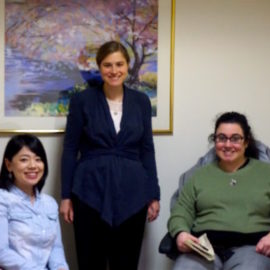
In Boston, I visited Boston Center for Independent Living and interviewed Allegra Stout and Sarah Kaplan. Through the interview, I became interested in Transition Internship Program which provides paid internship opportunities for high school students with disabilities. The internship sites vary, and include profit and non-profit organizations, local companies, educational institutions, and governmental agencies. The important point is that Transition Internship Program gives an opportunity based on what trainees want to do, not what they can do. What would be the reason for that?
What My Mom Said About Me Dating With A Wheelchair User – Part 3 – Shift of My Mom’s Attitude

In 2011, Mizuki and I had been in a long distance relationship for about 4 years at the time. We were working respectively in Tokyo and in Taipei. We talked about moving in together at some point in our life but we did not have things planned out and we did not really know how to make it happen.
On March 11th, 2011, a massive earthquake hit Japan. I lost contact with Mizuki for about a day. I could not reach her on her cell phone……..
How to Create Inclusive and Diverse Workplace Effectively?
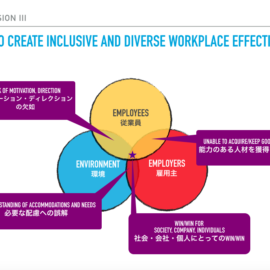
The Ability For Success topic in April was “how to create an inclusive and diverse workplace effectively?” We have two guests from US this time. They share a similar goal which is to make the society a better place. Their motivations are different but equally inspiring. We discussed and exchanged ideas about the what the key elements are to create an inclusive and diverse working environment.
The Future of Learning Environment -Power of Diversity-

In February, I have visited a non-profit private school, Academy for Precision Learning (APL) in Seattle. APL offers K12 (kindergarten to high school) education and has 109 students in total, including students with disabilities. The largest number of disability is autism spectrum disorder which accounts two thirds of the total students. Other diagnostic representations include intellectual disabilities, Learning Disabilities, ADD/ADHD, and Depression. The specialty of APL is fully inclusive education and individualized curriculum. From a general Japanese education perspective, people might feel “What is the meaning of putting students with with disabilities with students without disabilities in the same classroom although they cannot study the same subject at the same speed?” There are actually important values and benefits of including all students from various backgound to learn in the same environment.

